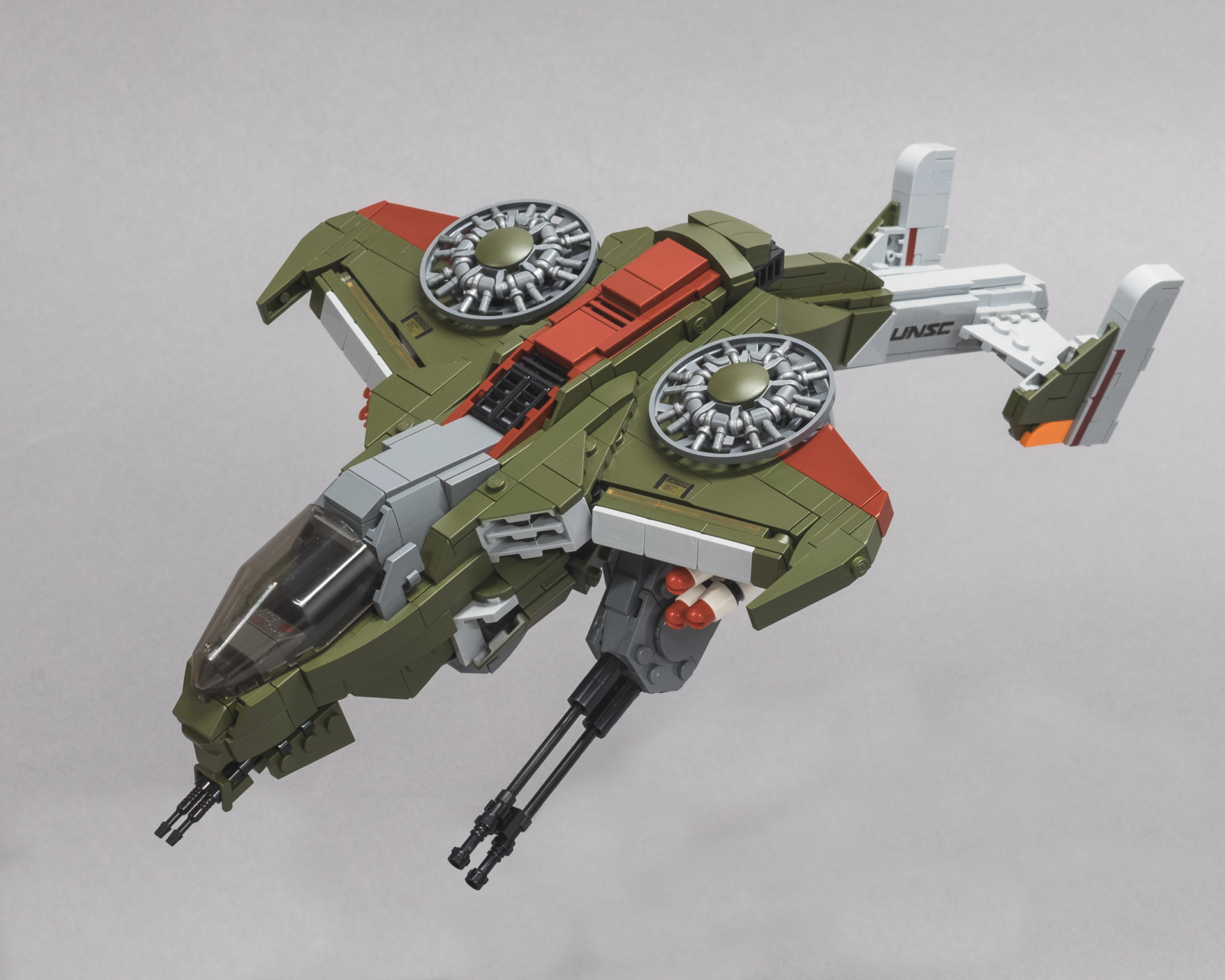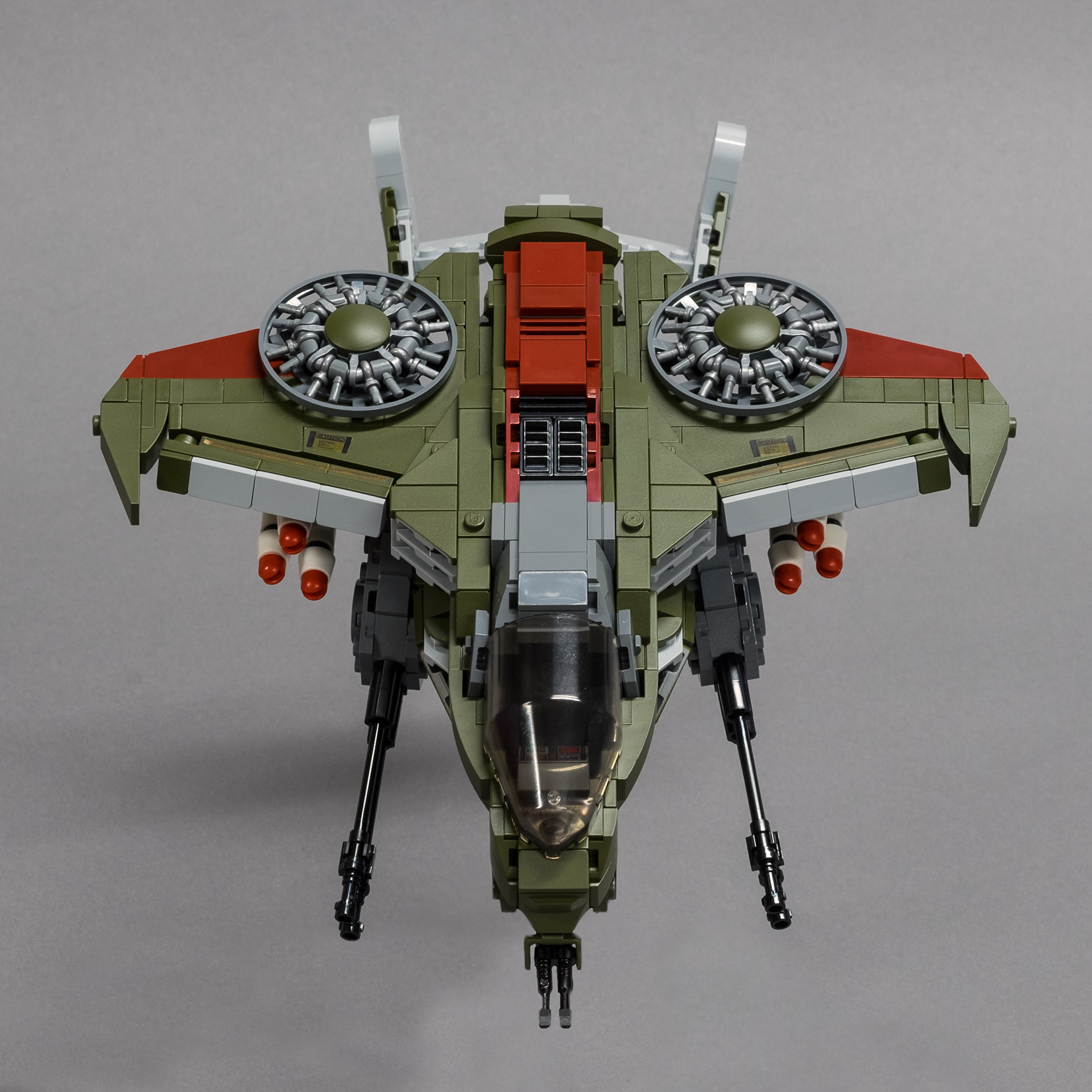The evolution of the "Halo" - aesthetic
The air-to-ground anti-tank aerodyne AV-22 Sparrowhawk, or simply "Hawk", was one of many new units first introduced in Halo Wars. This came after almost a decade of Halo game releases, which not only defined a clear nomenclature - ground vehicles being named after animals, air units being named after birds, Covenant-vehicles being named after supernatural beings - but also established a recognisable and iconic design for all its military vehicles. Creating a new unit that is both distinct and clearly a UNSC vehicle must have been quite challenging.
The Hawk is probably my personal favourite of the newer Halo designs, since many of its characteristics are a direct result of its in game functionality. Being a strategy game, Halo Wars offers many upgrades of existing units to give players more ways to approach a battle. The final upgrades are super variants of established UNSC-vehicles. The Hawk is one of them and is available as the final upgrade of the AV-14 Hornet when picking Ellen Anders as the leader. Therefore, the Hawk inherits many of the Hornet's features: The cockpit design is similar, it also has dual-ducted lift fans and a NOTAR tail design. Still, the AV-22 clearly differentiates itself from the AV-14 by its long and sleek design, the sharp wings as well as its heavy armament. This corresponds well to its in-game attributes, as it is one of the fastest and most powerful aircrafts.


Not just recreating a model...
Recreating the Hawk with LEGO® bricks was a lot of fun. By using spray-paint for the olive areas, I was totally free in my choice of parts and could experiment with newer bricks. I enjoy building aircrafts in general, because they usually have a lot of odd angles and curved shapes. The Hawk is no exception, quite the contrary: The cockpit, the grey part behind the cockpit, the tail and its main guns are all positioned at different angles to the main body. In order to translate this into a sturdy brick-built model, I designed the cockpit and wings as one outer frame, which girds the rest of the vehicle.
Since Halo Wars is a real-time strategy game, the actual in-game render has very few details. Thus, this recreation is mostly based on the original concept art. The dark red (Colour-ID 59) and orange (4) details, the UNSC-logo at the back as well as the white (1) missiles of the concept art model are not actually present in the game. But since they add texture and make the whole model visually more interesting, I also used them in this recreation.
As already mentioned, the olive-coloured bricks were spray-painted just like the LEGO® models of the Mantis and the Pelican. For the Hawk I used the same colour as for my model of BT from Titanfall, which is more saturated and contrasts more intensely with the light bluish grey (Colour-ID 86) and dark red bricks.
... recreating an impression
Models of aircrafts, especially those of sci-fi VTOLs, are a double edged sword. They usually make for great display pieces and their shapes make them visually appealing when seen live. But a photo of an aircraft on a stand is not very interesting and often appears dull. After all, their visually enticing movement through the sky is one of the main reason they are so popular in movies and games. The swirling up of dust and sand or the suppression of water while hovering over the sea are much more exiting images than those offered by a still model. That is why those effects are often used in concept art, to sell a good design. But with bricks, they are difficult to recreate.
By bringing the LEGO® model of the Hawk back into the desert with photo editing, another level of authenticity could be added. This makes the entire build come to life as a seemingly functional model. And it also alludes to those cinematic moments of pursuing an enemy, while flying just a few feet above the ground with sand whirling around. Those are the moments that the Halo games create both in our minds and on screen.

Original Concept Art
